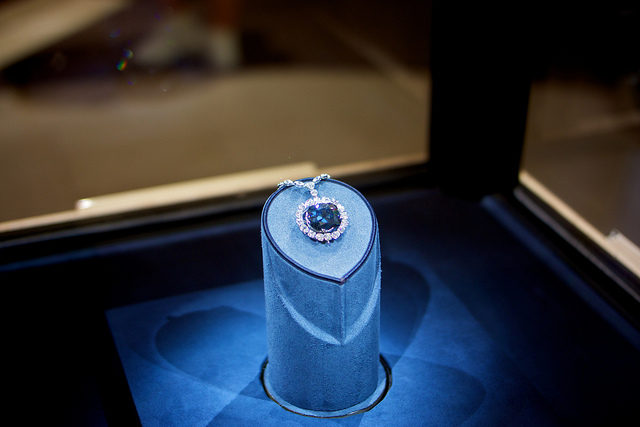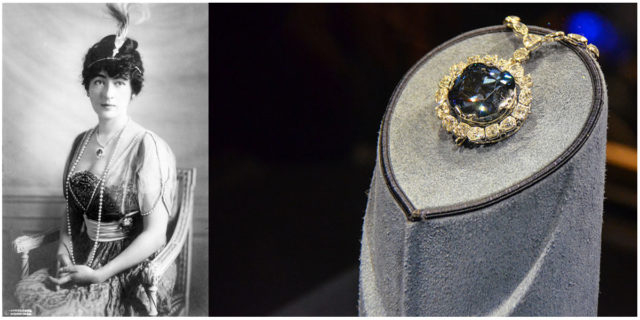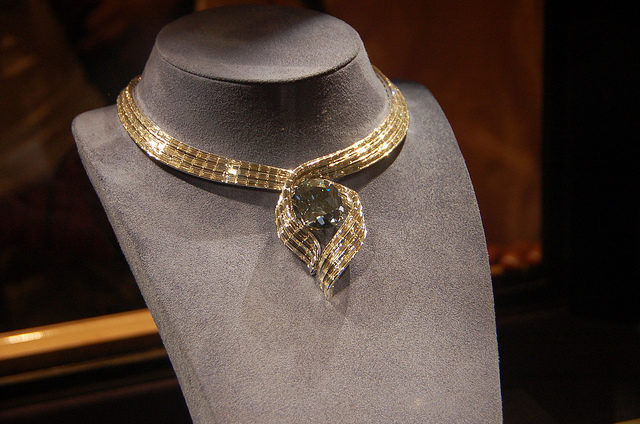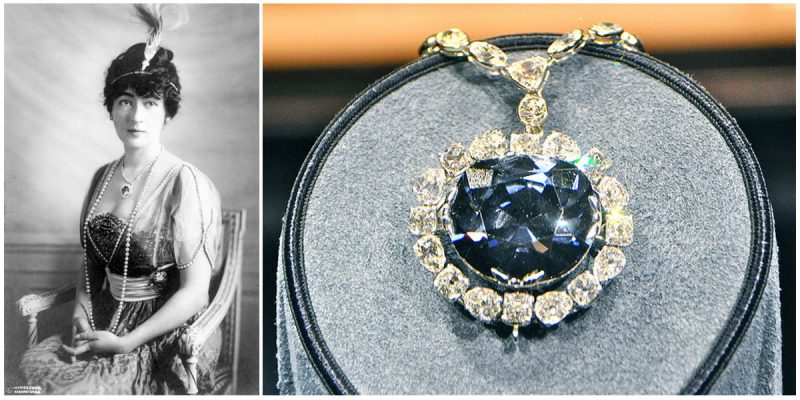The history of the Hope Diamond began almost four centuries ago. It is said that is one of the most famous jewels in the world. Weighing 45.52 karats, its exceptional size has revealed new information about of the formation of gemstones.

The diamond’s first owner was the French gem merchant Jean-Baptiste Tavernier, who described its color as a “beautiful violet”. Tavernier suggests that the gemstone came from India in the seventeenth century, in the Kollur mine in the Guntur district of Andra Pradesh. From India, he brought the diamond to Paris, and from that time the large stone became known as the “Tavernier Blue Diamond”. One report suggests that Tavernier took 25 diamonds to Paris, including the Hope Diamond, and sold all of them to King Louis XIV.
In 1678, Louis XIV commissioned the court jeweler Sieur Pitau to recut the Tavernier Blue and to make him a piece of jewel to remember. From then, the diamond was listed as the Blue Diamond of the Crown of France.
The diamond has a long and mysterious past and some people even think it is cursed. On 21 January 1793, Louis XVI was guillotined. Nine months later, on 16 October, his wife Marie Antoinette was also guillotined, and these beheadings are commonly cited as a result of the diamond’s “curse”. A group of thieves broke into the Royal Storehouse and stole most of the Crown Jewels. Following this, it disappeared from history.
Historians suggested that one of the robbers, Cabet Guillot, took the jewel to Le Havre and then to London, where the diamond was cut in two pieces. The diamond was later reported to have been acquired by a rich banker named Thomas Hope. After falling into the ownership of the Hope family, the stone came to be known as the “Hope Diamond”.

In 1910, the Hope diamond was sold to socialite Evalyn Walsh McLean and her husband in Washington D.C. Mrs. McLean was the first person to wear the diamond in public since it “changed owners”.

After McLean’s death, Smithsonian mineralogist George Switzer is credited with persuading jeweler Harry Winston to donate the Hope Diamond for a proposed national gem collection, which was to be housed at the National Museum of Natural History.
For four decades the diamond laid in its necklace inside a glass-fronter safe as a part of the gems and jewelry gallery. When the Smithsonian’s gallery was renovated in 1997, the necklace with the diamond was moved onto a rotating pedestal inside a cylinder made of bulletproof glass in its own display room at the National Museum of Natural History.
